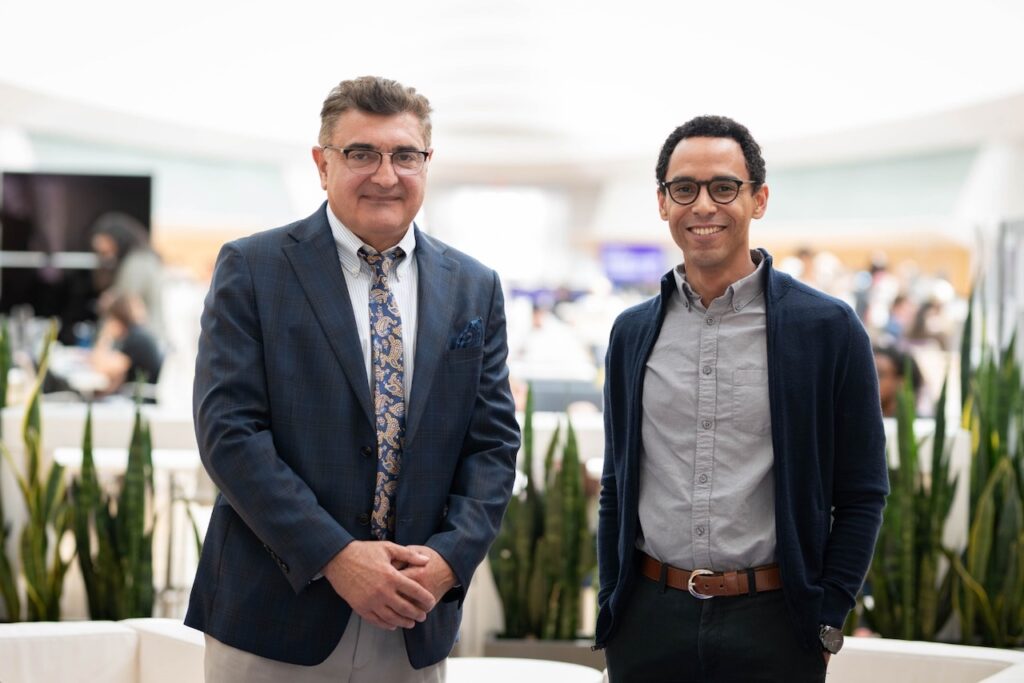Work by an interdisciplinary team of Florida Polytechnic University researchers helped Polk County, Florida, officials apply for two grants totaling more than $41.5 million to close the gap in broadband connectivity.
The 11-member research team conducted a feasibility study to address the insufficient broadband coverage problems in the county, and provide documentation to impact policies, influence legislation, and help acquire funding to improve and expand access to internet service. Polk County funded the $250,000 study.
The feasibility study’s recommendations included prioritizing anchor institutions like hospitals and schools, adopting policies to support expanded broadband, and choosing fiber as the preferred material for connectivity while using creative deployment techniques like micro-trenching and using existing utility poles to reduce costs. The study, which began last summer, also identified areas with poor speed or access, methods beyond fiber that can effectively expand connectivity, and opportunities and challenges for broadband deployment.

Dr. Shahram Taj (left), chair of Florida Polytechnic University’s Departments of Computer Science and Data Science and Business Analytics, and Dr. Rei Sanchez-Arias, the department’s assistant chair, led a broadband feasibility study for Polk County, Florida, focused on ways to improve and expand access to internet service.
“We wanted to have an unbiased data analysis of that, and it was presented to county leaders to understand the needs in different regions within our county and to understand and cross-reference the state of the current internet infrastructure,” said Dr. Rei Sanchez-Arias, assistant chair of Florida Poly’s Department of Data Science and Business Analytics, and the project manager and co-principal investigator for the effort.
A main focus was on anchor institutions, or entities like schools, hospitals, utilities, and fire stations – entities that must maintain broadband connectivity to provide continuous safety, health care, education, and emergency services.
“As an academic institution, we looked at how to use the factual data and evidence to come up with our own findings and recommendations,” said Dr. Shahram Taj, the project’s principal investigator and chair of the Departments of Computer Science and Data Science and Business Analytics at Florida Poly.
Additionally, the report provided Polk County officials with the tools needed to reproduce the analysis to keep up with new data as the region’s broadband capabilities expand.
“Polk County has been leveraging a lot of the information that we gleaned through the local planning team and our updated feasibility study and broadband plan with Florida Poly,” said David Palmer, director of the information technology division for the Polk County Board of County Commissioners.
The study involved analyzing and cross-referencing publicly available data and speed test information from internet users in the region with information from the Federal Communications Commission (FCC) and other national, state, and local data sources. The 200-page report is now being used as support for the county’s requests for additional grants and more. The county hopes to expand its work with Florida Poly, Palmer said.
The research team included eight Florida Poly faculty members from disciplines such as computer science, electrical and computer engineering, and humanities; as well as two student workers. They were Taj, Sanchez-Arias, Dr. Luis Jaimes, Dr. Susan LeFrancois, Dr. Md Selim Habib, Dr. Onur Toker, Dr. Harish Chintakunta, Jenny Lee, Gary Albarelli, Tyler Connelly, and Bryan Gawley.
For the most recent University news, visit Florida Poly News.
